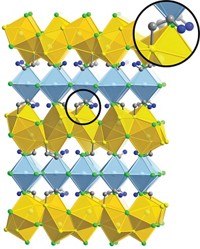Advertisement
Grab your lab coat. Let's get started
Welcome!
Welcome!
Create an account below to get 6 C&EN articles per month, receive newsletters and more - all free.
It seems this is your first time logging in online. Please enter the following information to continue.
As an ACS member you automatically get access to this site. All we need is few more details to create your reading experience.
Not you? Sign in with a different account.
Not you? Sign in with a different account.
ERROR 1
ERROR 1
ERROR 2
ERROR 2
ERROR 2
ERROR 2
ERROR 2
Password and Confirm password must match.
If you have an ACS member number, please enter it here so we can link this account to your membership. (optional)
ERROR 2
ACS values your privacy. By submitting your information, you are gaining access to C&EN and subscribing to our weekly newsletter. We use the information you provide to make your reading experience better, and we will never sell your data to third party members.
Electronic Materials
Liquid crystal adopts new alignment
Aligning molecules’ polarity could lead to new applications
by Sam Lemonick
June 21, 2020
| A version of this story appeared in
Volume 98, Issue 24

Liquid crystals are ubiquitous in displays from digital watches to high-definition TVs. Almost 100 years after the discovery of liquid crystals, researchers have proved that a liquid crystal exists in a form that represents a new phase of these materials (PNAS 2020, DOI: 10.1073/pnas.2002290117). Liquid crystals contain parallel rod–shaped molecules. Though polar, the molecules’ heads and tails are oriented randomly, so the overall material doesn’t have uniform polarity. Other groups of scientists recently reported that they created liquid crystals with microscopic areas of polarity (Phys. Chem. Chem. Phys. 2017, DOI: 10.1039/C7CP00456G and Phys. Rev. X 2018, DOI: 10.1103/PhysRevX.8.041025). Noel A. Clark and colleagues at the University of Colorado, Boulder, now show that the materials in those earlier studies can have macroscopic areas of uniform polarity when the molecules are sandwiched between glass plates. Because the material has overall polarity, Clark and other experts say, it will produce optical effects faster and with less voltage than typical liquid crystals, potentially leading to better displays or new kinds of memory devices. It’s “almost impossible” to imagine that these materials won’t find wide application, says Richard Mandle of the University of Leeds, whose group made these materials first, in 2016.





Join the conversation
Contact the reporter
Submit a Letter to the Editor for publication
Engage with us on Twitter